

Elephants
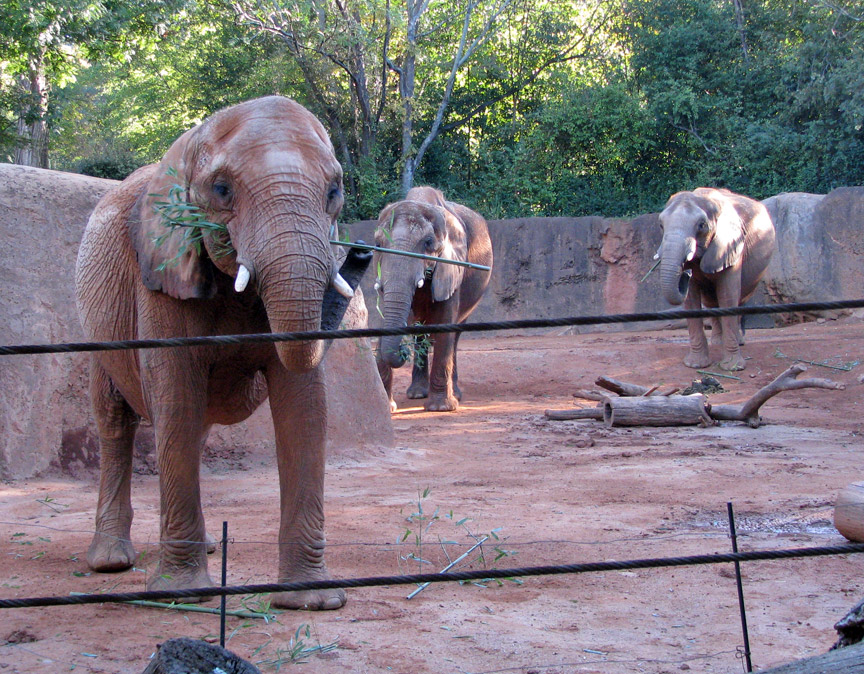
Elephant enclosure at the Atlanta Zoo
African elephants are the species of elephants in the genus Loxodonta, one of the two existing genera in Elephantidae. Although it is commonly believed that the genus was named by Georges Cuvier in 1825, Cuvier spelled it Loxodonte. An anonymous author romanized the spelling to Loxodonta and the ICZN recognizes this as the proper authority.
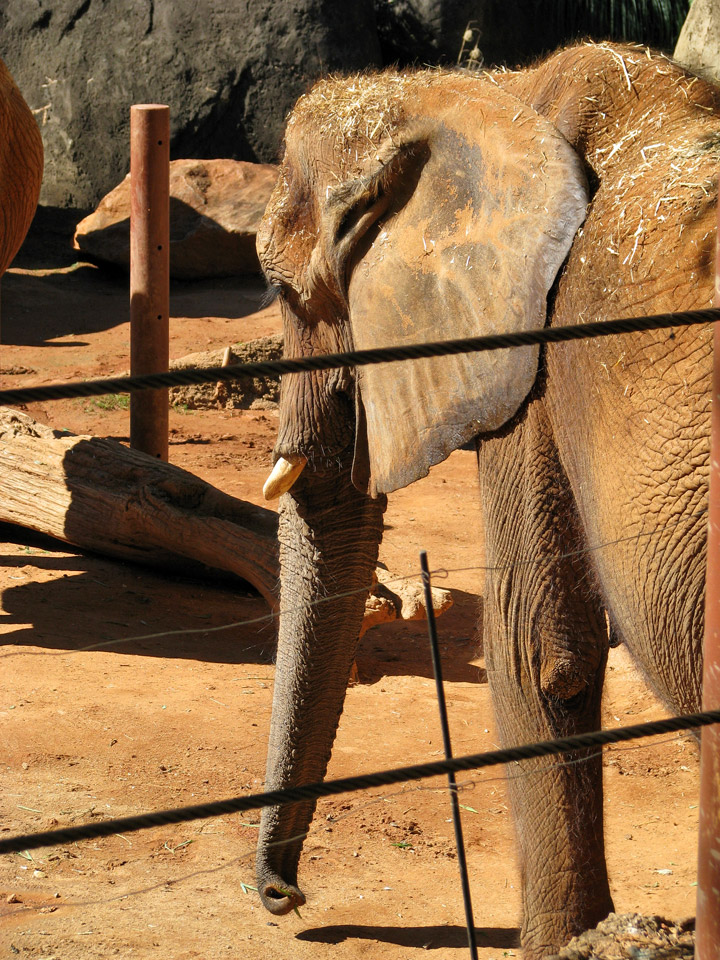
Fossil Loxodonta have only been found in Africa, where they developed in the
middle Pliocene.
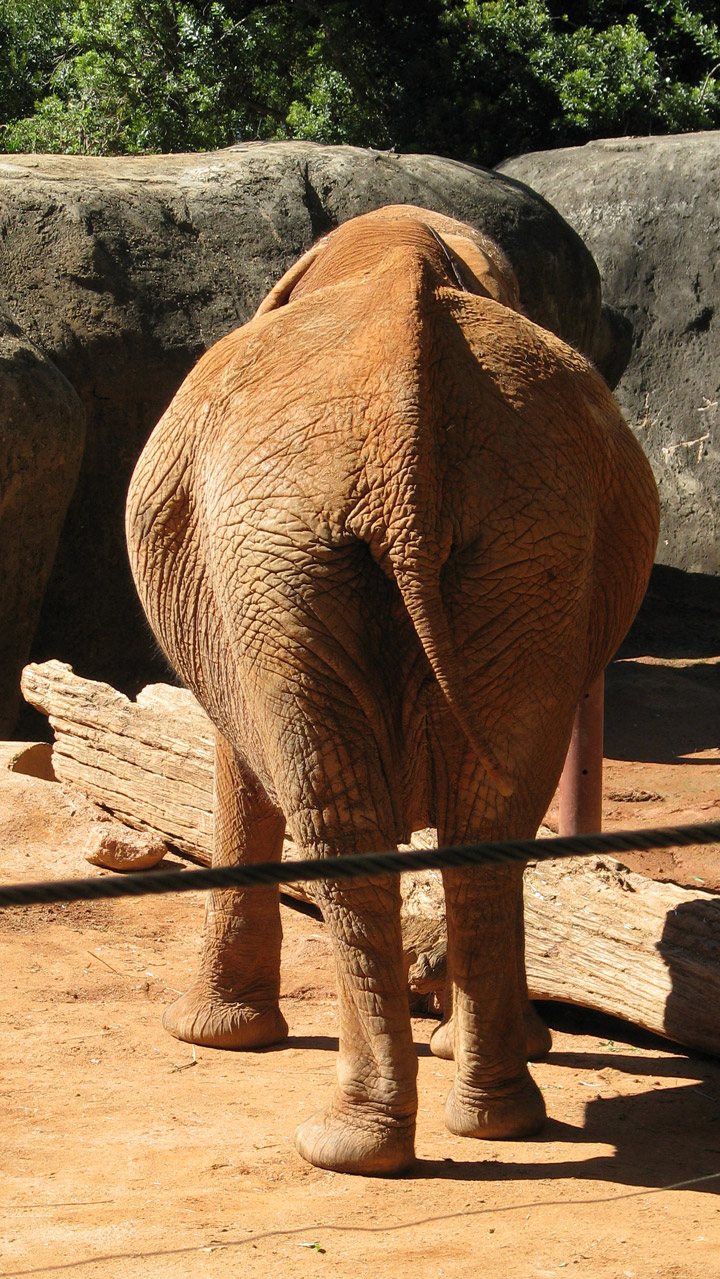
rear view
African elephants are bigger than Asian elephants. Males stand 3.64 meters (12 ft) tall at the shoulder and weigh 5455 kg (12,000 lbs), while females stand 3 meters (10 ft) and weigh 3636 kg to 4545 kg (8,000 to 11,000 lbs). However, males can get as big as 15,000 lbs (6800 kg).
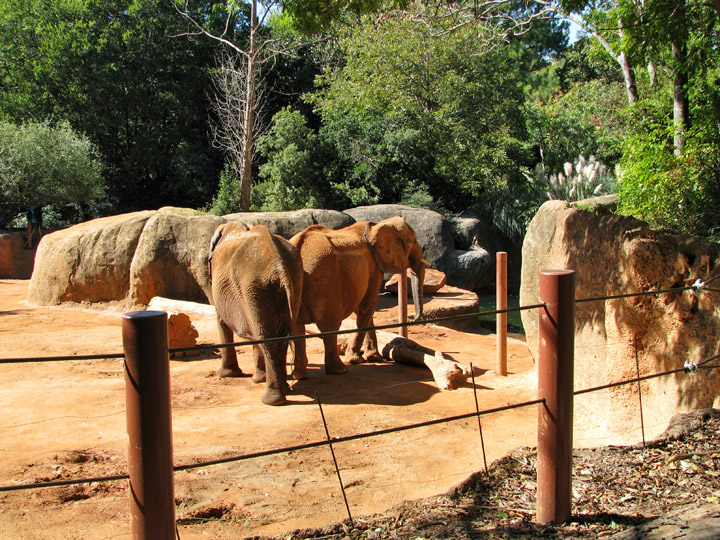
Elephants have four molars; each weighs about 11 lb (5.0 kg) and measures about
12 inches long. As the front pair wear down and drop out in pieces, the back
pair shift forward and two new molars emerge in the back of the mouth. Elephants
replace their teeth six times. At about 40 to 60 years of age the elephant no
longer has teeth and will likely die of starvation, a common cause of death.
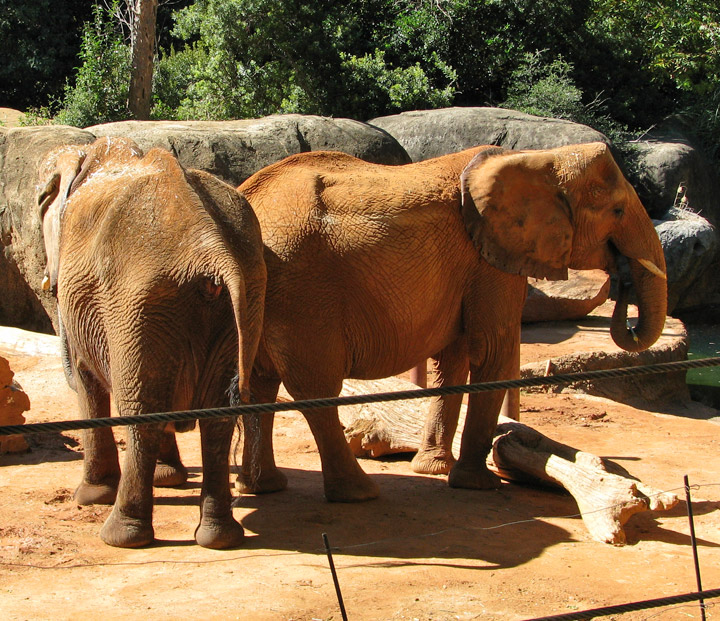
Their tusks are teeth; the second set of incisors become the tusks. They are
used for digging for roots and stripping the bark off trees for food, for
fighting each other during mating season, and for defending themselves against
predators. The tusks weigh from 50-100 pounds and can be from 5 to 8 feet (2.4
m) long. Unlike Asian elephants, both bulls and cows have tusks. . The enamel
plates of the molars are lesser in number than in Asian elephants.
Text from Wikipedia
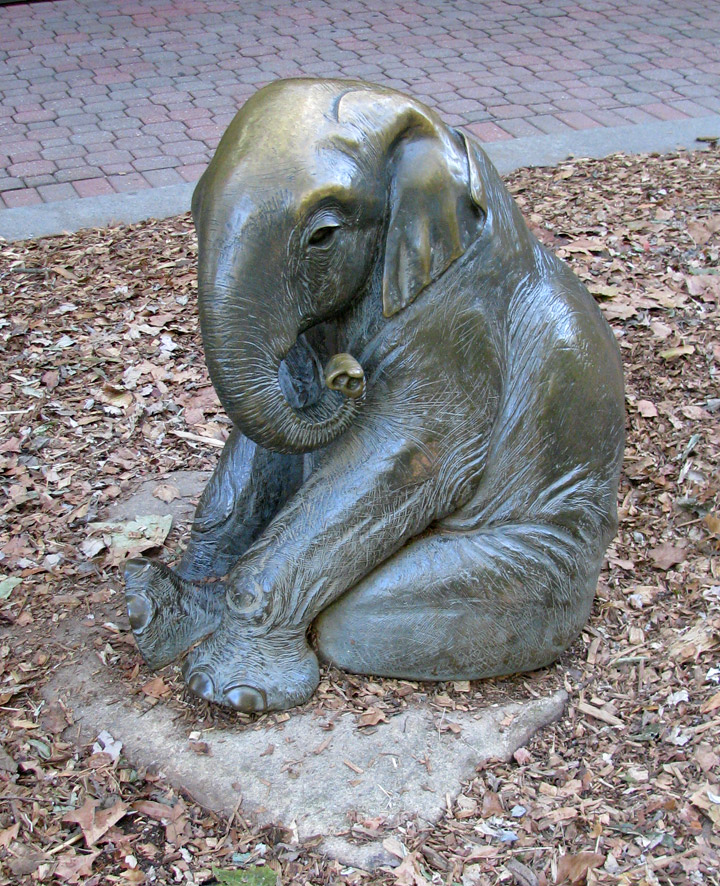
honored in a statue
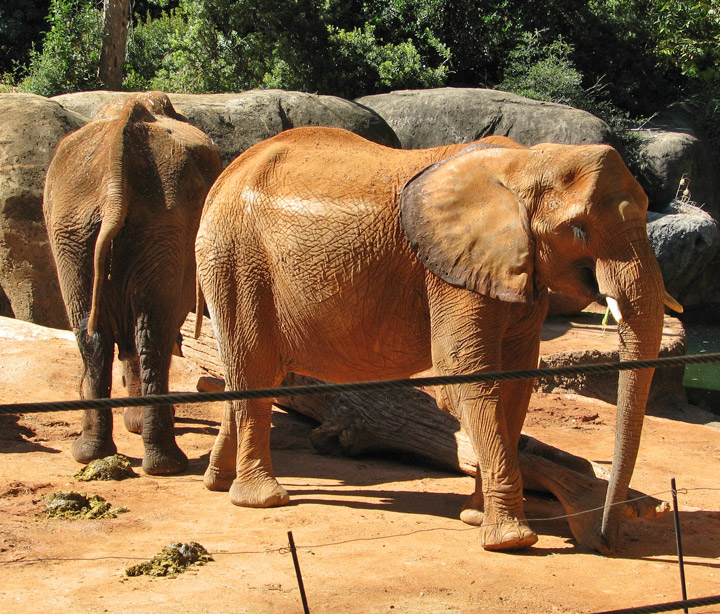
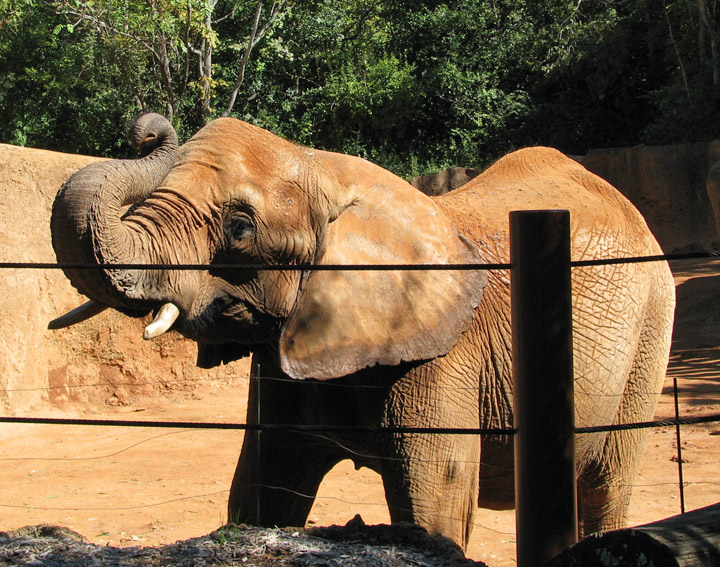
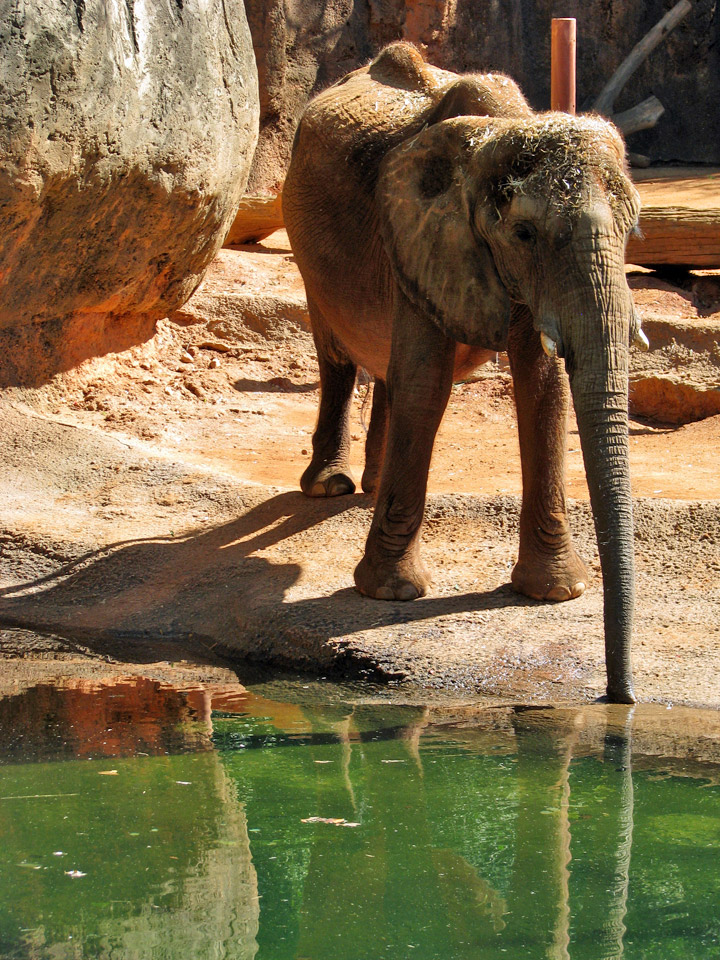
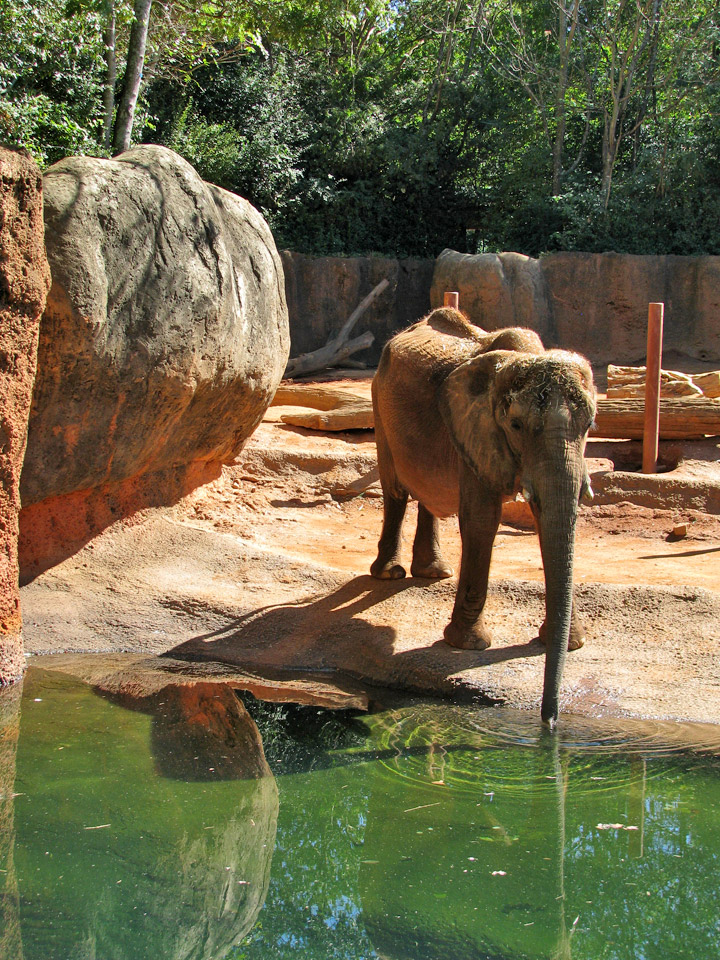
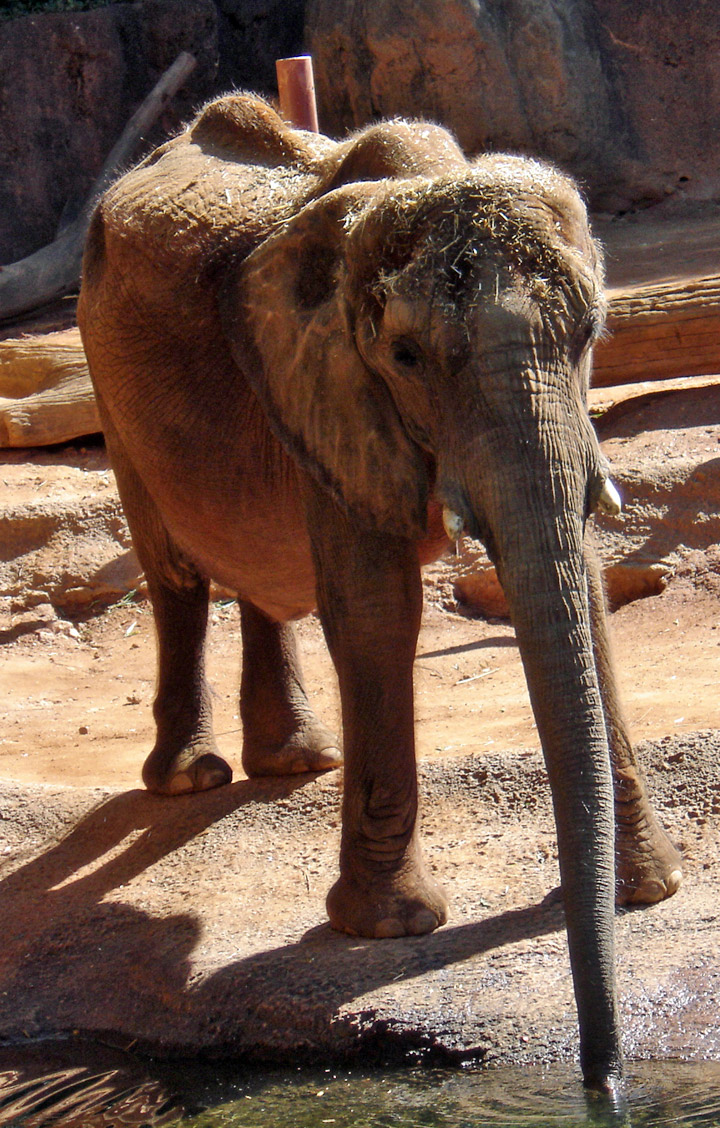
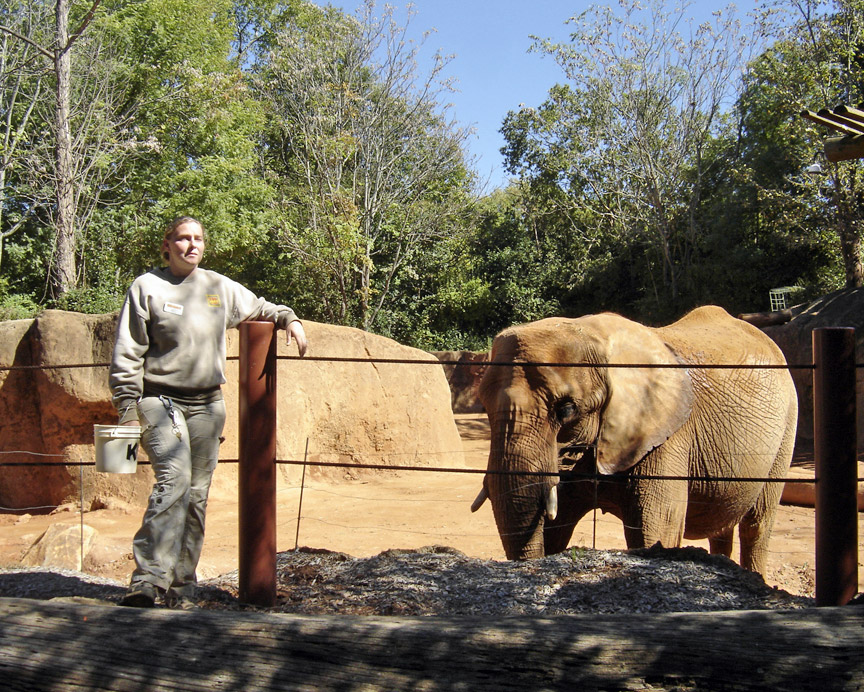
volunteer telling about the African Elephants